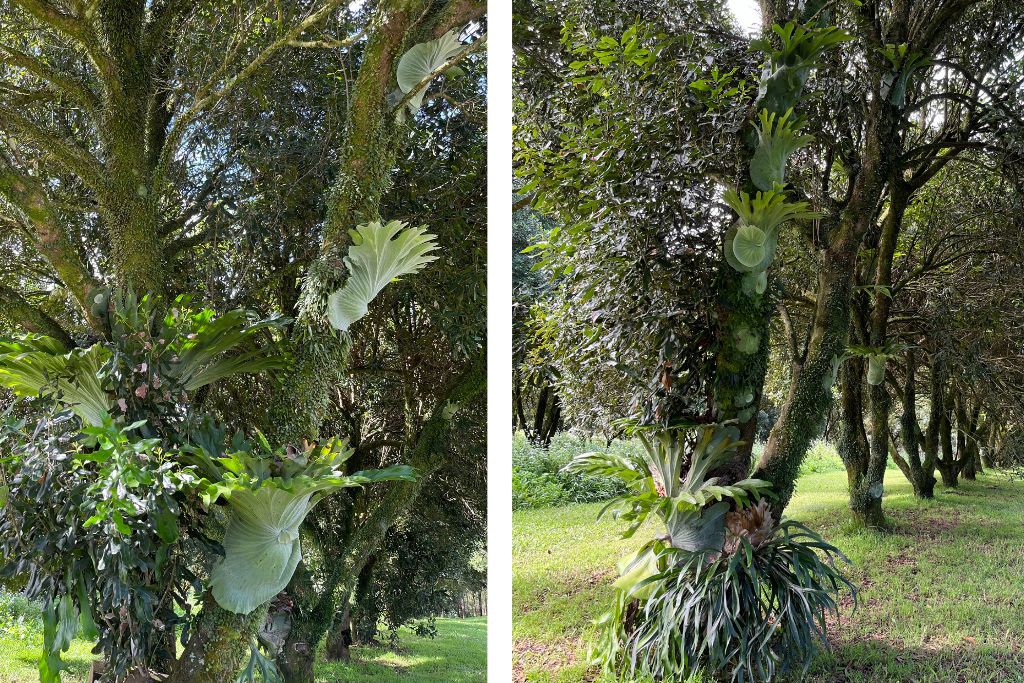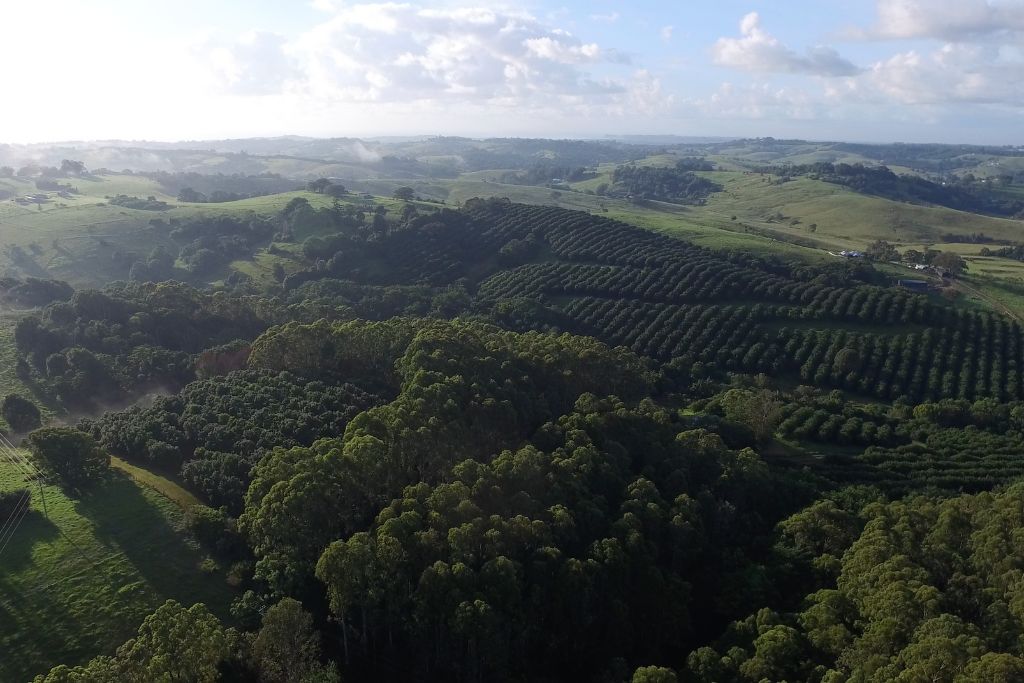
Our Macadamia Trees: A Thriving Example of Biodiversity on a Commercial Farm
Our commercial farm may look a bit different. Here in the orchards, our macadamia trees thrive beside a rainforest ecosystem, divided by inter-row planting, encouraging carbon sequestering, soil health and pollinators. You don’t need to look far - biodiversity can be seen right on the macadamia trunks and branches which are covered in all different kinds of plants such as staghorn ferns, moss and lichen.

Our macadamia trees are a great example of the thriving biodiversity the Brook family has worked so hard to implement. Instead of traditional monoculture farming practices, Pam and Martin Brook, the founders of Brookfarm, enact nature based solutions that strengthen the entire ecosystem on their farm.
Did you know...
Macadamias are an Australian native rainforest tree, the only nut native to Australia, and have been around for 60 million years!

Breaking the monoculture monoploy
Monoculture farming is the practice of growing a single crop on the same land year after year, prevalent for centuries in large-scale commercial farming. While it may increase short term yields, it can necessitate the use of pesticides and fertilizers, encouraging soil erosion, water pollution, genetic vulnerability and the loss of biodiversity.
By focusing on regenerative agriculture which encourages local and native biodiversity instead, Pam and Martin have proven that a commercial farming operation can coexist with nature from day one.
Benefits of biodiversity
Biodiversity is all about the variety of life - from plants and animals, down to the tiny microorganisms, fungi and bacteria. It is the foundation of a healthy and balanced ecosystem, and gene pool - providing numerous benefits such as supporting life and habitats, healthy food and water sources and native plants and climate regulation.
When an ecosystem has high biodiversity, it is stable and balanced, allowing it to better handle changes such as climate change or the introduction of non-native species.
The more variety, the better!

Did you know...
In Australia, more than 80% of plant and animal species are endemic, which means that they only occur naturally in Australia.
Safeguarding our precious biodiversity
Encouraging and protecting biodiversity in every step, from plants, animals, and ecosystems right down to genetics, means a healthier farm with healthier produce, soil, and people.
As custodians of the land, it is our duty to safeguard its diverse and precious biodiversity. This starts with native species that naturally thrive locally. The benefits of these efforts naturally extend beyond the farm, positively impacting neighbouring areas through the distribution of native seeds, safe access to clean food and water, and strengthening wildlife populations.
How can I help
Anyone can help restore biodiversity no matter how small their contributions. Planting plants native to where you live helps create and connect habitat corridors and strengthens food sources for local fauna populations. Let us know if you do, we would love to hear about it!
 Native Superfoods: Delicious flavour and many health benefits
Native Superfoods: Delicious flavour and many health benefits

Leave a comment